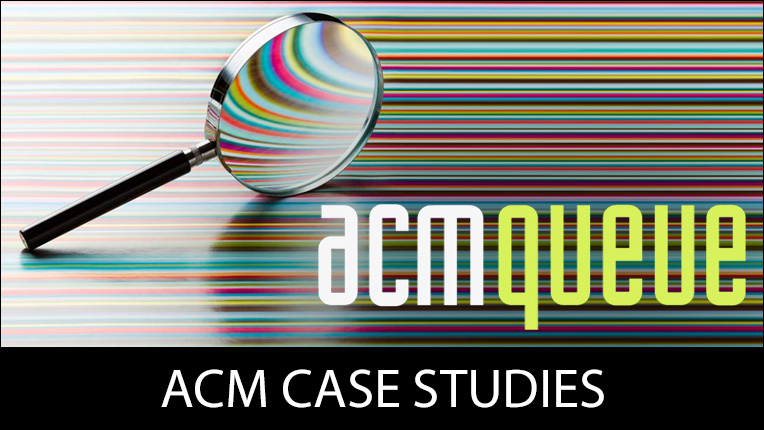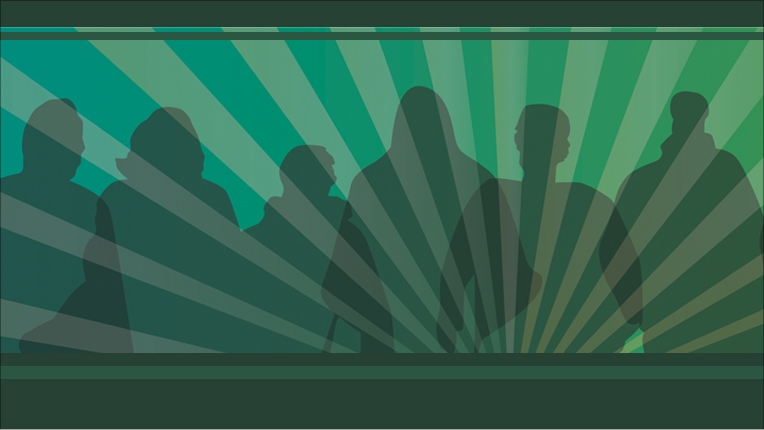ACM Peer Review Policy Frequently Asked Questions
What is considered confidential information in the context of peer reviewing?
The entirety of an article under review is confidential information, including title, author list and affiliations, abstract, references, body of the article, and any supplementary material. Additionally, the fact that a paper has been submitted to a particular venue is confidential. The identity of reviewers and the content of reviews is also confidential. However, authors are permitted to use and share the text of the reviews that they receive. For publications following certain types of open peer review, some or all of these items may not be considered confidential. In such cases, this will be stated explicitly in the individual publication’s guidelines.
Notwithstanding the above, reviewers or other individuals involved in the peer review process who detect a case of dual submission can and should report this to the Editor(s)-in-Chief, Senior Associate Editor, or Program Committee Chair(s).
To protect the privacy and confidentiality of the authors, for publications that follow a single or double anonymous review process, reviewers may not share, publicly or privately, the text of their peer reviews.
Authors are permitted to use and share the text of the reviews that they receive.
I reviewed a paper in the past, and I just received it again at another publication in my role as editor, reviewer, program committee member, etc. Can I disclose that I have seen the paper before, and can I re-use some of the text of my previous review, if it is still applicable?
Reviewers should not disclose information about a paper’s confidential previous review history which they may know because of their role as a reviewer or decision maker at another publication. However, in cases where a reviewer or other individual involved in the peer review process detects a case of simultaneous submission, where the same paper is under peer review at two publications at the same time, they can and should notify the Editor(s)-in-Chief, Senior Associate Editor, or Program Committee Chair(s).
In addition, since reviewers own the copyright to their reviews (with certain restrictions on how the material can be used and what information can be disclosed), they may re-use the text of some of their previous review, provided that it is still applicable to the current version of the submission.
As a reviewer, can I use generative AI software tools to draft my review or improve the quality of my review?
Reviewers may not upload confidential ACM submissions into any generative AI or LLM system or any system managed by a third party which does not promise to maintain the confidentiality of that information, since the storage, indexing, learning, and utilization of such submissions may violate the author’s right to confidentiality. Likewise, reviewers may not upload any confidential information, such as text, metadata, or identifying information about the authors contained within their draft review into any generative AI or LLM system or any system managed by a third party which does not promise to maintain the confidentiality of that information, as this may also violate the confidentiality and privacy rights and obligations of the author and reviewer.
However, reviewers may use generative AI or LLM systems to improve the quality and readability of reviewer reports for the author, provided any and all parts of the review that would potentially identify the submission, author identities, reviewer identity, or other confidential content is removed prior to uploading into a generative AI or LLM system that does not promise to maintain the confidentiality of that information.
Also, reviewers are permitted to use enterprise versions of LLMs or other third party systems which promise to maintain the confidentiality of uploaded information to draft or improve the readability or quality of their reviews provided that, in doing so, reviewers do not breach confidentiality and that reviewers understand that they are responsible for the content of their reviews, including any bias, inappropriate content, or offensive language contained therein.
Reviewers have an obligation to understand whether the systems that they are using to generate or improve review content will be training on and/or storing that information. If the reviewer is not confident that using a particular system will not violate the ACM Policy on Peer Review or other ACM Publication Policies, they should not use the system.
If I use generative AI or LLM systems in preparing my review within the parameters permitted by ACM, do I need to disclose this use?
If you are using generative AI software tools to edit and improve the readability of your existing text in much the same way you would use a typing assistant like Grammarly to improve spelling, grammar, punctuation, clarity, engagement or use a basic word processing system to correct spelling or grammar, it is not necessary to disclose such usage of these tools in your review.
As a reviewer, may I upload any part of a submission under review to an LLM for any reason?
Uploading any part of a submission to an LLM or other third party system which does not promise to maintain the confidentiality of that information is not permitted. However, reviewers are permitted to use enterprise versions LLMs or other third party systems which promise to maintain the confidentiality of that information to improve the readability of their reviews.
At the current time, we do not know how each LLM trains on uploaded content, so reviewers need to be very careful about how they use these systems.
What should a reviewer do if they come across a passage in a submitted work that they think they recognize from a previously published paper?
If a reviewer comes across a passage in a submitted work that they think they recognize from a previously published paper, they should notify the Editor(s)-in-Chief or Program Committee Chair(s) so that those individuals can investigate accordingly.
As a reviewer, may I share a submission with a graduate student or junior colleague as a teaching opportunity and/or ask that individual to perform a review on my behalf?
This practice is known as “sub-reviewing” or “co-review.” Sub-reviewing is permitted only with the explicit written approval of the Editor(s)-in-Chief, Senior Associate Editor, Program Committee Chair(s) of the publication, or other individual authorized to assign reviewers on behalf of the publication. It is a requirement that the identity of the sub-reviewer be declared in writing to those approving the written request to utilize a sub-reviewer. The reviewer shall be responsible for the content of the review performed by the sub-reviewer.
What forms of peer review does ACM allow, and what steps does an ACM publication need to take to experiment with a new peer review model?
Most ACM publications use single or double anonymous peer review.
If an individual ACM Publication such as a particular ACM Journal or Conference is interested in experimenting with a new peer review model, it should contact ACM’s Director of Publications to initiate a process for evaluating the viability of that model and receiving approval by the ACM Publications Board to experiment with that model.
How and when is ACM’s Peer review policy updated?
This Policy is reviewed and updated periodically by the ACM Publications Board, so it is incumbent upon all stakeholders of ACM Publications to refer back to this Policy whenever participating in the peer review process for any ACM Publication.
What are the obligations of ACM publication venues to reference and publicize this policy to their communities?
All ACM publication venues publishing refereed articles shall reference this Policy along with any publication-specific policies in Calls for Papers, Instructions for Authors, Peer Reviewer Guidelines, Conference or Journal Websites, and other public and private correspondence relating to the peer review of submitted articles.
In a review, is a reviewer permitted to recommend that the authors cite the reviewer’s own publications in their paper?
As part of their review, reviewers should identify any relevant papers that are missing from the reference list, which may include some of the reviewer’s own papers. Inappropriate citation recommendations are prohibited and are treated as a policy violation by ACM.
What constitutes a peer review Conflict of Interest (COI)?
Please refer to the Conflict of Interest Policy for ACM Publications .
What should a reviewer do if they suspect they may have a conflict of interest with the authors of a paper that they have been asked to review for a publication that follows a double anonymous peer review process?
In this case, the reviewer should disclose the potential conflict of interest to the member of the publication’s team who invited them to review the paper so that a determination can be made as to whether a conflict of interest exists.
If a reviewer does not have time to complete a full review but is able to complete a short or partial review, what should they do?
In this case, the reviewer should consult with the member of the publication’s team who invited them to review the paper. In some situations, a partial review focusing on some aspects of the submission may nonetheless be a valuable component of the peer review process.
Are individuals reviewing the same paper allowed to consult with each other?
Each ACM publication sets its own rules in this regard. Certain ACM publications allow a reviewer discussion phase as part of their peer review process.
I submitted a paper to an ACM publication that follows a single-anonymous peer review process. My supplementary material is freely available on an open repository. Can the publication require that I upload my supplementary material to the publication’s submission system as part of the review process for my paper?
ACM supports authors depositing their supporting material (data, etc.) in various repositories. However, if such repositories track usage in ways that might potentially identify or indicate the identity of a paper’s reviewers, Program Committee Chair(s), handling editors, or others involved in the confidential peer review process, then ACM publications may require that, additionally, this supporting material be made available to these individuals in a way that does not risk revealing their identity. ACM supports open science and the free availability of research artifacts, but the confidentiality of the peer review process, including protecting reviewer and editor identities, needs to be upheld.
Contact Information
Contact the ACM Director of Publications for any of the following:
- Questions about the interpretation of this policy
- Questions about the appeals process
- Requests for deviations from, or extensions to, this policy
- Reporting of potential violations of this policy
Mailing address:
ACM Director of Publications
Association for Computing Machinery
1601 Broadway, 10th Floor
New York, NY 10019-7434
Email: [email protected]
ACM Case Studies
Written by leading domain experts for software engineers, ACM Case Studies provide an in-depth look at how software teams overcome specific challenges by implementing new technologies, adopting new practices, or a combination of both. Often through first-hand accounts, these pieces explore what the challenges were, the tools and techniques that were used to combat them, and the solution that was achieved.

Lifelong Learning
ACM offers lifelong learning resources including online books and courses from Skillsoft, TechTalks on the hottest topics in computing and IT, and more.

